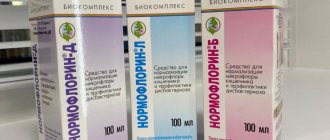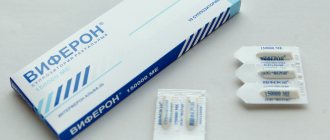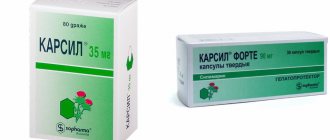Release form and composition
Fluconazole is available in two forms:
- Capsules of 50, 100 and 150 mg.
Shape: oblong. Color: white with yellow cap, yellow with yellow cap, blue. The capsule contains white or yellowish powder. The drug has no specific odor and is tasteless.
Active ingredient: fluconazole 50, 100 or 150 mg. Excipients: lactose monohydrate, gelatinized starch, silicon dioxide, magnesium stearate. The capsule shell contains: titanium dioxide E-171, gelatin.
- Tablets of 50, 100 and 150 mg.
Shape: round, biconvex. Color: white, cream shade available. The tablets have no specific odor and are tasteless.
Active ingredient: fluconazole 50, 100 or 150 mg. Excipients: lactose monohydrate, gelatinized starch, sodium lauryl sulfate, silicon dioxide, magnesium stearate.
Treatment of uncomplicated VK
Uncomplicated VK is caused by strains of C. albicans, most of which exhibit sensitivity to azole antifungals. Treatment of an uncomplicated disease leads to a positive result in 90% of cases, even when prescribing a single dose of oral or a short course of local antimycotics. There are several topical azole drugs to choose from with approximately equal effectiveness.
The empirical prescription of antimycotics for this form of the disease is completely justified. Moreover, the choice of treatment is often based on the patient's individual preferences.
The Candida cell wall is a complex glycoprotein that depends on the constant synthesis of ergosterol. Azole compounds, which are the active ingredients of azole antifungals, block the production of ergosterol, allowing topical antifungals to be effective in 80-90% of cases.
Azole drugs, which are divided into imidazole and triazole derivatives, are the most numerous and effective group of antifungal agents. Azole antimycotics include both systemic drugs (ketoconazole, fluconazole, itraconazole) and local ones (bifonazole, clotrimazole, isoconazole, econazole and others).
In comparative trials of 10-14-day courses of therapy with azoles and nystatin, the preferential effectiveness of the former was revealed (80-95% of mycological cure compared with 70-80% in the nystatin group). In addition, azoles have proven effective even in short courses of treatment.
Therapy for VK in pregnant women involves the use of local antifungal drugs. Safe topical antimycotics include miconazole and clotrimazole; the recommended course of treatment is seven days. In addition, during pregnancy, the polyene antibiotic natamycin is prescribed. The standard regimen of antifungal therapy with local forms of natamycin is designed for use for three days. If necessary, the course can be doubled.
pharmachologic effect
The effect of the drug is due to its antifungal effect.
Pharmacodynamics
The drug is one of the highly specific antifungal agents. Fluconazole inhibits the activity of fungal enzymes. Active against various mycoses. These include Candida spp., Cryptococcus neoformans, Coccidioides immitis, Microsporum spp., Trichophyton spp.
Pharmacokinetics
Fluconazole is absorbed from the gastrointestinal tract. Eating does not affect this process. The maximum concentration of the drug in the body is reached after 1-1.5 hours. The bioavailability of the drug is 90%. The half-life of Fluconazole is 30 hours. The content of the drug in the blood plasma depends on the dosage used.
Fluconazole has the ability to penetrate into all biological fluids of the body. It is found in breast milk, saliva, joint fluid, sputum, and peritoneal fluid. 8 hours after taking the drug, its constant values in the vaginal secretion are achieved. Due to the penetration of Fluconazole into the cerebrospinal fluid, it is used to treat fungal meningitis.
The drug is excreted by the kidneys. Most of Fluconazole is excreted unchanged, the rest in the form of metabolites.
Treatment regimen for chronic candidiasis
To destroy a fungal infection, local and systemic antifungal drugs are prescribed:
- tablets, capsules;
- ointments, creams, suppositories.
A comprehensive treatment regimen necessarily includes drugs from the group of immunomodulators, which help restore the immune system and improve its functioning. After antifungal therapy is completed, it is necessary to normalize the vaginal microflora by introducing beneficial bacteria into it. These microorganisms will inhibit the growth and reproduction of the fungal infection and prevent the disease from reoccurring.
To restore the balance of microflora, the following can be used:
- suppositories with bifidobacteria;
- suppositories with lactobacilli.
In the second case, treatment should be carried out under the constant supervision of a gynecologist, because improper use of suppositories with lactobacilli can cause an exacerbation of recurrent thrush.
If, after complex drug therapy, chronic candidiasis does not go away completely, additional physiotherapeutic procedures are prescribed, such as:
- laser therapy;
- magnetic therapy;
- electrophoresis;
- mud baths and wraps.
The procedures will help strengthen both general and local immunity, suppress the activity of bacteria and fungi, and reduce the number of episodes of relapse to a minimum.
With frequent exacerbations, it is important not only drug treatment of chronic candidiasis, but also adherence to the rules of a healthy lifestyle. In order for it to stop bothering you, you need to balance your diet, get rid of bad habits, eliminate stress factors, engage in moderate physical activity, and take care of your personal hygiene.
You can find out how much it costs to treat chronic candidiasis at the Healthy Family medical clinic by calling +7 (495) 185 93 07 or ordering a call back. After receiving your request, our administrators will contact you and answer all your questions.
Indications for use
Indications for the use of Fluconazole include:
- Diseases caused by candida. These include the following types of candidiasis: disseminated;
- generalized;
- invasive of any location.
The dosage of Fluconazole is determined by the attending physician depending on the disease and its severity.
Fluconazole for thrush
Thrush is a fungal infection of the female genital organs. Develops against the background of immunodeficiency. Symptoms of the disease include itching in the groin area, cheesy discharge and hyperemia of the mucous membranes. Thrush is caused by fungi of the genus Candida. Fluconazole is effective against this infection. Used as part of complex therapy. Before using the medicine, you should consult your doctor.
Fluconazole for nail fungus
Onychomycosis is a fungal infection of the nail plate. An integrated approach is used to treat this disease. The therapy includes the administration of Fluconazole. The dosage depends on the severity of symptoms. The drug blocks the spread of pathogenic microorganisms.
Fluconazole for cystitis
Cystitis is an inflammation of the mucous membrane of the bladder. The causative agents of the disease are bacteria, viruses or fungi. If there is a fungal infection, Fluconazole is added to therapy. It inhibits the action of pathogenic microorganisms, helping to reduce the severity of clinical symptoms.
Fluconazole for skin fungus
Mycosis of the skin is a fungal infection of the skin. Recently, there has been a spread of this disease. This is due to poor environmental conditions, frequent emotional overload and a decrease in the body's protective functions. An integrated approach is also used to treat mycosis of the skin. Fluconazole is prescribed orally to combat the causative agent of the disease.
Fluconazole for candidiasis
Diseases caused by fungal infections belong to the group of candidiasis. To treat pathology, antifungal agents are used, the effect of which extends to various infectious agents. Fluconazole is included in the complex therapy of candidiasis as etiotropic therapy.
Fluconazole for stomatitis
Fungal infection of the oral mucosa is a common disease in dental practice. This pathology requires complex treatment. The therapy includes Fluconazole. It safely and effectively inhibits the spread of fungal microorganisms.
Fluconazole for prevention
The use of Fluconazole is indicated not only for therapeutic purposes, but also for preventive purposes. To do this, the drug is taken in reduced dosages. The frequency of administration and duration of the course are determined by the attending physician depending on the disease and the risk of relapse.
Fluconazole for sore throat
Fungal tonsillitis is an infectious inflammatory disease that occurs as a result of exposure to yeast-like fungi and pathological cocci. A purulent coating appears on the mucous membrane of the throat, and the tonsils and lymph nodes become enlarged. Sore throat develops against the background of immunodeficiency. Fluconazole is prescribed to eliminate the causative agent of the disease and alleviate its symptoms.
Recurrent candidiasis
In the chronic course, during the period of remission, the clinical manifestations of the disease are blurred, but at the time of relapse, the symptoms worsen and in intensity resemble acute candidiasis. Recurrent candidiasis during an exacerbation can be recognized by the following symptoms:
- Itching, discomfort. They can be felt both on the surface of the external genitalia and inside the vagina. Often itching and discomfort are accompanied by redness and swelling of the mucous membrane.
- Pain, burning when urinating. In those areas where the largest number of fungi are localized, burning and pain are felt more intensely, but the maximum symptoms appear upon contact with urine, which further irritates the affected mucosa.
- White or slightly yellowish discharge with a cheesy consistency. A recurrence of thrush can manifest itself as either intense or scanty discharge of an unpleasant, sour odor. It is worth noting that not all vaginal discharge indicates candidiasis. Therefore, in order to determine an accurate diagnosis, you need to submit a sample for laboratory testing, which will help identify the pathogen.
In addition to the characteristic signs of candidiasis, during a relapse a woman may experience other unpleasant symptoms:
- excessive vaginal dryness;
- discomfort, pain during sexual intercourse;
- formation of cracks and erosions on the mucous membranes of the genital organs and vaginal walls;
- nagging, aching pain in the lower abdomen.
Interaction
The combined use of Warfarin and Fluconazole increases the duration of prothrombin time. Hypoglycemic agents increase the half-life of Fluconazole. In this regard, the chance of developing hypoglycemia increases. Combined use with Phenytoin increases its concentration in the blood. Hydrochlorothiazide increases the concentration of Fluconazole in the blood. The simultaneous use of Fluconazole and Zidovudine increases the side effects of the antiretroviral drug. When taken together with Cisapride, the negative effect on the cardiovascular system increases.
Treatment of complicated RVC
The optimal course of treatment for complicated VK has not yet been precisely determined. Some studies have shown the effectiveness of antifungal suppressive therapy for several months.
The drug of choice for RVC is oral fluconazole. For severe recurrent VK, fluconazole is administered at a dose of 150 mg (three doses) every 72 hours for nine days, after which treatment is continued at 150 mg per week for a long time. This antifungal regimen significantly reduces the likelihood of relapse compared with three doses of fluconazole without maintenance treatment.
Long-term suppressive therapy with oral fluconazole is convenient and well tolerated compared with other antifungal agents. Studies have shown that the effectiveness of a suppressive treatment regimen for RVC reaches 90%. Contrary to expectations, the development of resistance to C. albicans or superinfection with non-albicans species was not confirmed in patients taking fluconazole for a long time. However, in patients with persistent infection, identification of the pathogen is recommended.
Other oral agents that have proven effective in the treatment of RVC can be used as drugs for suppressive therapy. The following are prescribed as alternative treatment regimens:
- ketoconazole 100 mg per day (due to the hepatotoxicity of oral ketoconazole, preference is usually given to other drugs);
- itraconazole 200 mg twice a day for one day every month;
- clotrimazole vaginal suppositories.
For women who prefer topical treatment, clotrimazole is recommended at a dosage of 500 mg per week or 200 mg twice a week. The use of other local antifungal drugs is also permissible, and it practically does not matter which active ingredient is used.
In patients with RVC who do not undergo maintenance therapy, the probability of relapse within six months after successful treatment of the next episode of the disease is 70%. The risk of relapse in women taking antimycotics as suppressive treatment is 40-50% within one year after stopping the drugs.
Fluconazole analogs
In cases where it is not possible to use Fluconazole, it is allowed to use its analogues. These include Flucostat, Diflucan, Nystatin, Pimafucin, Mikosist, Itraconazole, Clotrimazole.
Which is better: Fluconazole or Flucostat?
Flucostat is an antifungal agent. The active substance of the drug is fluconazole. Available in the form of capsules and solution for intravenous administration. Flucostat is the first domestically produced drug based on fluconazole. German technologies are used to produce the drug. Effective against various mycoinfections. Indications for the use of Flucostat are generalized and disseminated candidiasis, fungal infections of the skin, mucous membranes of the oropharynx and esophagus, pityriasis versicolor, and onychomycosis.
Flucostat and Fluconazole have a similar active substance - fluconazole. The drugs are highly selective antimicrobial drugs. Fluconazole is produced in the form of tablets and capsules. Flucostat is available in the form of capsules and solution for intravenous administration. The drugs are produced by domestic manufacturers. However, German technologies are used to manufacture Flucostat.
Which is better: Fluconazole or Diflucan?
Diflucan is an antifungal medicine. Effective for the treatment of diseases caused by yeast, yeast-like and mold fungi. The active substance of the drug is fluconazole. Diflucan is available in the form of capsules, solution for intravenous administration and powder for suspension. Indications for use are candidiasis. Pathology may occur due to the following conditions:
- immunosuppressive therapy;
- long-term use of antibacterial therapy;
- immunodeficiency states;
- prevention of exacerbation of chronic forms of diseases.
Both drugs have an antimicrobial effect. The active substance of the drugs is fluconazole. Medicines are effective for similar conditions. The difference between Diflucan and Fluconazole is their release form. Diflucan is produced in the form of capsules, solution for intravenous administration and powder for suspension. Fluconazole is available in the form of capsules and tablets. Diflucan is produced by a European pharmaceutical company. Fluconazole is a product of a domestic manufacturer.
Which is better: Fluconazole or Nystatin?
Nystatin is an antibacterial agent of the polyene series. Has antifungal activity. The active substance of the drug is nystatin. The drug is available in the form of vaginal suppositories, ointments and tablets. Indications for the use of Nystatin are:
- vulvo-vaginal candidiasis;
- cutaneous candidiasis;
- fungal infection of the mucous membranes of the oropharynx and esophagus;
- prevention of the development of fungal complications during treatment with antibacterial drugs.
Fluconazole and Nystatin have an antifungal effect. The active substance of Fluconazole is fluconazole, and Nystatin is nystatin. Medicines differ in the form of release. Fluconazole is produced in the form of tablets and capsules. Nystatin is available in the form of vaginal suppositories, ointments and tablets. The choice of drug depends on the disease and its severity. Therefore, before purchasing the drug, it is recommended to consult your doctor.
Which is better: Fluconazole or Pimafucin?
Another representative of the antifungal group of drugs is Pimafucin. The active substance of the drug is natamycin. The drug is available in several forms. These include tablets, cream and vaginal suppositories. This explains the widespread use of the drug for various diseases caused by fungal infections. Among them:
- intestinal candidiasis that occurs while taking certain medications;
- cutaneous candidiasis;
- nail candidiasis;
- mycosis of the external auditory canal.
The drugs have a similar mechanism of action. I use them to treat fungal infections. The differences between Fluconazole and Pimafucin lie in the active ingredients and release form. Fluconazole is produced in the form of tablets and capsules. The active substance of the drug is fluconazole. Pimafucin is available in the form of cream, tablets and vaginal suppositories. The active ingredient of Pimafucin is natamycin.
Which is better: Fluconazole or Mikosist?
Mikosist is an antifungal drug. Belongs to the group of triazole drugs. Active against various fungal infections. The active ingredient of the drug is fluconazole. The drug is available in the form of capsules and solution for infusion. Mikosist is used in the presence of the following diseases:
- genital candidiasis;
- fungal infections of the skin and nails;
- generalized candidiasis;
- fungal infection of the mucous membranes;
- cryptococcosis;
- prevention of exacerbation of chronic diseases.
Fluconazole and Mikosist have similar effects. The drugs are effective against various fungal infections. The active substance of both drugs is fluconazole. The differences between Fluconazole and Mikosist lie in the form of release of the drugs and their manufacturer.
Which is better: Fluconazole or Itraconazole?
Itraconazole is a broad-spectrum antifungal agent. Belongs to the group of triazole derivatives. Prescribed for identifying dermatophytes, yeast-like and mold fungi. The active substance of the drug is itraconazole. Indicated for various infectious diseases caused by fungal microorganisms. Available in capsule form.
The differences between Itraconazole and Fluconazole are the drug release form, active substances and manufacturer. You should not choose the drug and determine its dosage on your own. To do this, it is recommended to consult a doctor.
Which is better: Fluconazole or Clotrimazole?
Clotrimazole is a broad-spectrum antifungal drug. The drug belongs to the group of imidazole derivatives. Clotrimazole has antibacterial, antiprotozoal, trichomonacid and antifungal effects. The active substance of the drug is 1-[(2-chlorophenyl)diphenylmethyl]-1H-imidazole). Produced in the form of powder for topical use, cream, ointment, vaginal tablets, suppositories or gel, spray and solution for external use, paste for application to the skin.
Indications for use include:
- dermatomycosis;
- athlete's foot;
- candidiasis;
- microsporia;
- dermatophytosis;
- vulvovaginitis;
- candidiasis vulvitis;
- sanitation of the birth canal before childbirth.
Fluconazole and Clotrimazole have an antifungal effect. Active against many fungal microorganisms. The active ingredient of Fluconazole is fluconazole, while that of Clotrimazole is 1-[(2-chlorophenyl)diphenylmethyl]-1H-imidazole). Other differences between the drugs are their form of release and manufacturers. Fluconazole is produced by a domestic manufacturer in the form of tablets and capsules. Clotrimazole is produced by a European pharmaceutical company in the form of a powder for topical use, cream, ointment, vaginal tablets, suppositories or gel, spray and solution for external use, paste for application to the skin. It is recommended to consult a doctor before using medications. The specialist will choose a medicine based on the examination.
Features of the chronic form of candidiasis
The causative agent of vaginal candidiasis is a fungus of the genus Candida, which belongs to the opportunistic microflora. The microorganism lives on the skin and mucous membranes of almost every person, and its growth and activity are suppressed by the immune system. Any malfunction of the immune system disrupts the balance of microflora and leads to the activation of pathogenic bacteria and fungi. In this situation, acute candidiasis develops, characterized by severe, vivid symptoms and requiring immediate treatment under the supervision of a physician. If you self-medicate or let the disease take its course, it becomes chronic, which is much more difficult to combat.
Chronic recurrent candidiasis is characterized by periodic exacerbations, which are repeated 4 or more times during the year. A fungal disease occurs in 2–3% of women of reproductive age. If relapses occur no more than 4–5 times a year, it means that the infection develops passively, does not cause serious complications and is more effectively amenable to drug therapy. But when the symptoms of thrush bother you every month, it is better not to hesitate to visit a doctor, because such a course of a chronic disease indicates the progression of severe inflammatory processes in the organs of the genitourinary system.
special instructions
Treatment must be continued until clinical and hematological remission occurs. Premature cessation of treatment leads to relapses.
During treatment, it is necessary to monitor blood counts, kidney and liver function. If renal and liver dysfunction occurs, you should stop taking the drug.
In rare cases, the use of fluconazole was accompanied by toxic changes in the liver, incl. with a fatal outcome, mainly in patients with serious concomitant diseases. In the case of hepatotoxic effects associated with fluconazole, there was no obvious dependence on the total daily dose, duration of therapy, gender and age of the patient. The hepatotoxic effects of fluconazole were usually reversible; its signs disappeared after cessation of therapy. If clinical signs of liver damage that may be associated with fluconazole appear, the drug should be discontinued.
People with AIDS are more likely to develop severe skin reactions when taking many drugs. In cases where a rash develops in patients with a superficial fungal infection and is assessed as definitely related to fluconazole, the drug should be discontinued. If a rash appears in patients with invasive/systemic fungal infections, they should be carefully monitored and fluconazole should be discontinued if bullous changes or erythema multiforme occur.
Caution should be exercised when taking fluconazole concomitantly with cisapride, rifabutin or other drugs metabolized by the cytochrome P 450 system.




